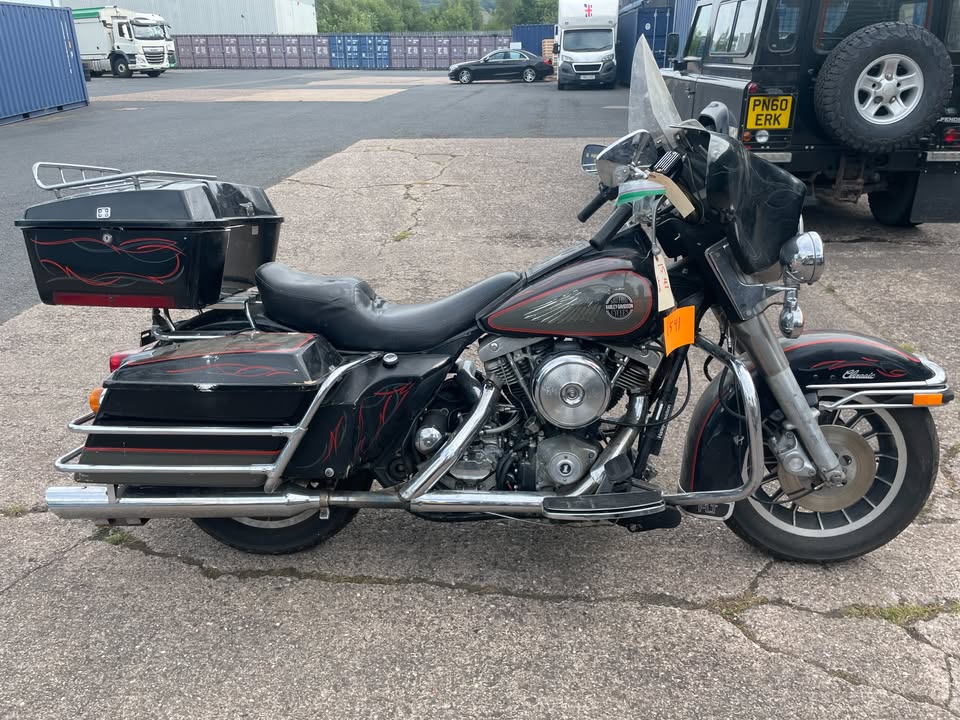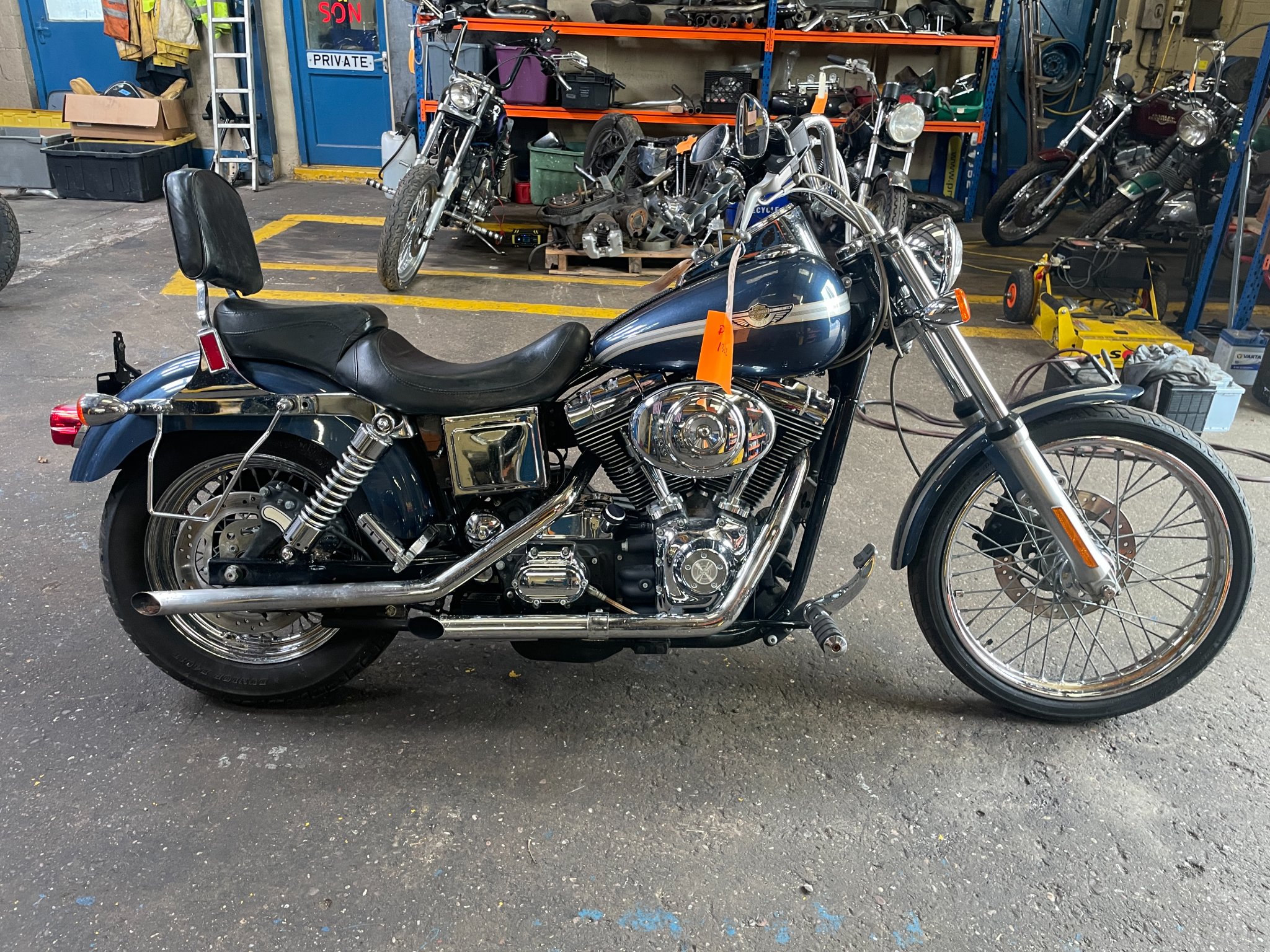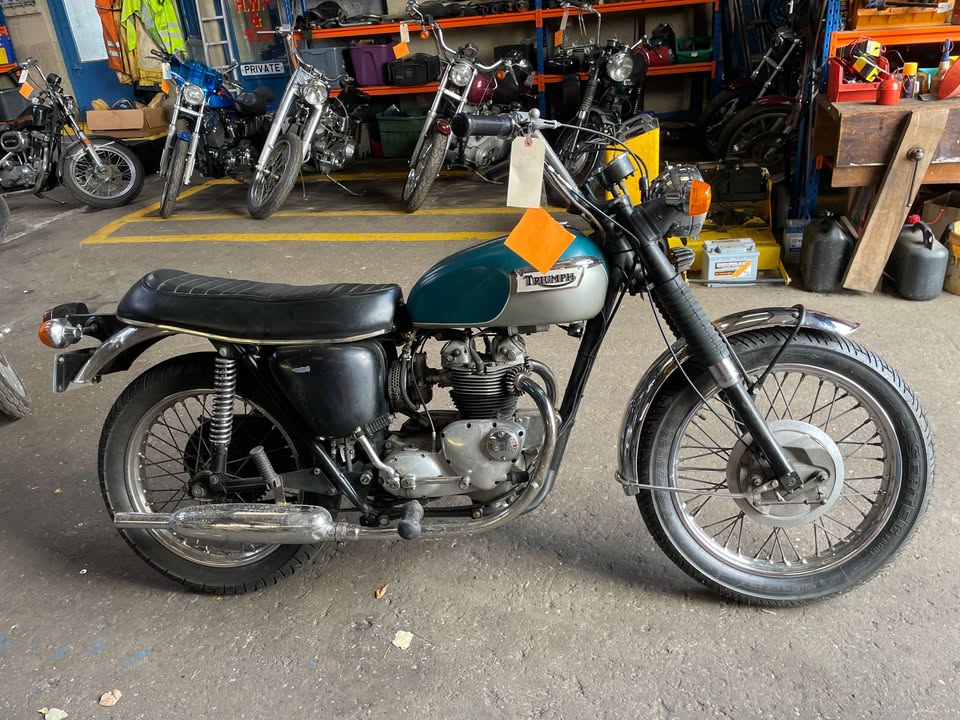Classic and Classy Motorcycles Ltd
Vintage and Classic Motorcycle Importers
1981 Harley Davidson Tour Glide Clasic FLTC Shovelhead 1340cc Ref 1541

1981 Harley-Davidson Tour Glide Classic FLTC 1340cc Shovelhead – A Milestone in Touring Evolution
Historical Context
The 1981 Harley-Davidson Tour Glide Classic FLTC was a significant step forward in the Motor Company's touring lineup. Introduced in 1980, the FLT platform marked Harley's boldest attempt at reimagining the full-dress touring motorcycle. With the Tour Glide, Harley unveiled a new rubber-mounted frame, independent of the older FLH chassis, and introduced a frame-mounted fairing – a first for the brand. By 1981, the Tour Glide Classic (FLTC) served as the top-tier touring machine, built for long-distance comfort, stability, and road presence. It came at a pivotal time, as Harley was just about to undergo a major transformation following its buyback from AMF in 1981. The FLTC, with its innovations and design direction, helped lay the groundwork for the future of Harley-Davidson’s touring class.
Technical Specifications and Performance
• Year: 1981
• Make: Harley-Davidson
• Model: FLTC Tour Glide Classic
• Engine Displacement: 1340cc (82 cu in)
• Engine Type: Air-cooled Shovelhead V-twin
• Compression Ratio: 8.0:1
• Carburetion: Keihin carburetor
• Ignition System: Electronic
• Transmission Type: 5-speed constant mesh
• Final Drive: Chain
• Cooling System: Air-cooled
• Fuel Capacity: Approx. 5.0 gallons (19 liters)
• Braking System: Dual front discs, single rear disc
• Dry Weight: Approx. 790 lbs (358 kg)
• Top Speed: Around 90–100 mph
Technical Advancements
The FLTC featured a number of new design and engineering innovations. Chief among them was the rubber-mounted drivetrain, which isolated the vibration of the Shovelhead engine from the rider, a notable comfort improvement over earlier rigid-mount Harleys. The frame-mounted fairing (as opposed to the fork-mounted fairing on Electra Glides) improved high-speed stability and reduced handlebar input fatigue on long rides. The Tour Glide also included hard luggage, a touring seat, and a more sophisticated electrical system with better instrumentation for the era.
Evolution of the Model
The Tour Glide line was short-lived but crucial. The FLTC was the precursor to the Road Glide, which would eventually replace it and continue the frame-mounted fairing legacy. While Electra Glide models stuck with traditional design cues, the Tour Glide pushed boundaries and served riders who prioritized touring performance over nostalgia. The FLTC embodied Harley’s attempt to modernize and attract new long-distance riders during a time of industry transformation.
Competitors in the Market
In the early 1980s, Harley faced stiff competition from Japanese touring bikes like the Honda Gold Wing GL1100, Kawasaki Voyager, and Yamaha Venture. These bikes offered liquid cooling, shaft drive, and full fairings with high-tech accessories. While the Tour Glide Classic couldn’t match their sophistication, it had the torque-rich, unmistakable feel of a Harley Shovelhead, superior customization options, and an iconic American look that appealed to brand-loyal riders and those seeking a rawer riding experience.
Legacy and Appeal
Today, the 1981 Tour Glide Classic FLTC is seen as an important transition model. It bridged the era between the old-school Shovelheads and the modern touring bikes of the Evolution and Twin Cam eras. It’s appreciated for its unique styling, early implementation of rubber-mounted comfort, and rarity compared to other Harley touring models. For collectors and enthusiasts, it represents a pivotal chapter in Harley’s journey to becoming a dominant force in the touring segment.
Find Classic Motorcycles
Stay in the loop - Subscribe for Updates
One email notification a month when a new shipment arrives.
 2003-Harley-Davidson-Anniversary-Dyna-Wide-Glide-FXDWG-1450cc-Ref-D1322
2003-Harley-Davidson-Anniversary-Dyna-Wide-Glide-FXDWG-1450cc-Ref-D1322 1971-Triumph-500cc-T100c-Tiger-Ref-1561
1971-Triumph-500cc-T100c-Tiger-Ref-1561